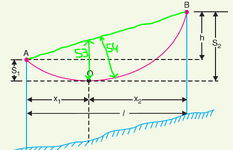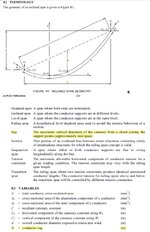Costin Ruja
Electrical
- Oct 19, 2011
- 93
Good evening,
I have to work myself through some electrical line sag calculations and the norm states that it shouldn't have more than 6% sag.
In this particular case where the supports at different levels, how is the sag defined? S1 and S2 are pretty self explanatory and S4 comes into mind from simply supported beams.

Regards,
Costin
I have to work myself through some electrical line sag calculations and the norm states that it shouldn't have more than 6% sag.
In this particular case where the supports at different levels, how is the sag defined? S1 and S2 are pretty self explanatory and S4 comes into mind from simply supported beams.

Regards,
Costin

